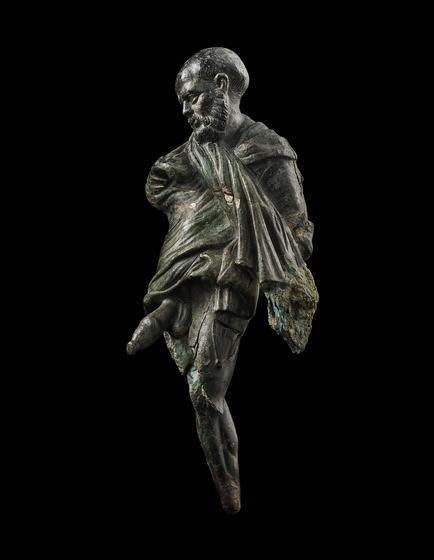archaicwonder: Roman Bronze Figure of Priapus, 1st Century ADThis beautifully expressive figure h
archaicwonder: Roman Bronze Figure of Priapus, 1st Century AD This beautifully expressive figure has a rich patina with fine anatomical details, including his characteristically over life-sized phallus. The deity exhibits an elegant counterpoised twist, his right arm folded beneath the robe from above, the left grasping it below, holding his fruits. It has a freedom of movement that is accentuated by the flowing drapery, suggesting an early Imperial date for the god. Greek and Roman writings mention that Priapus was the son of Aphrodite and Dionysus (or Hermes, Zeus, and Pan), depending on the tradition of individual texts. In keeping with his celebrated parents, the deity is synonymous with health, fertility, as well as prosperity. His cult spread rapidly from Asia Minor in the fourth century BC to the heart of the Roman world in the late Republican period. As a rustic god he presided over the bounty of gardens and orchards. Figures of this kind were popular in houses rather than a public setting, and prized by elites for safeguarding human and natural fertility. He is famously depicted on a fresco dating to the first century AD in the House of the Vetti, Pompeii. The best known accounts of his often risqué behaviour are from the Priapeia, a collection of poems by the Roman literary genius Martial in the second century AD. -- source link
